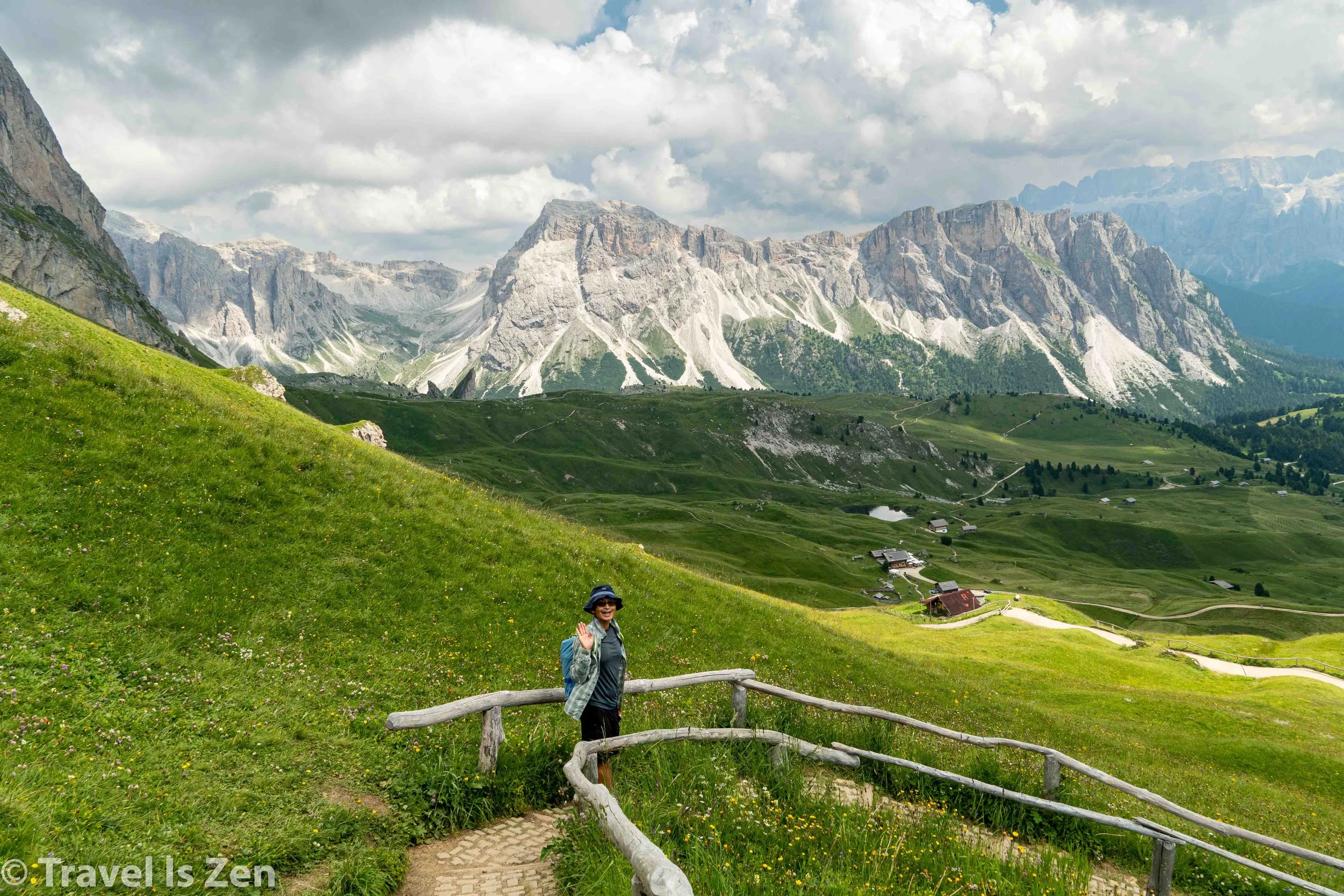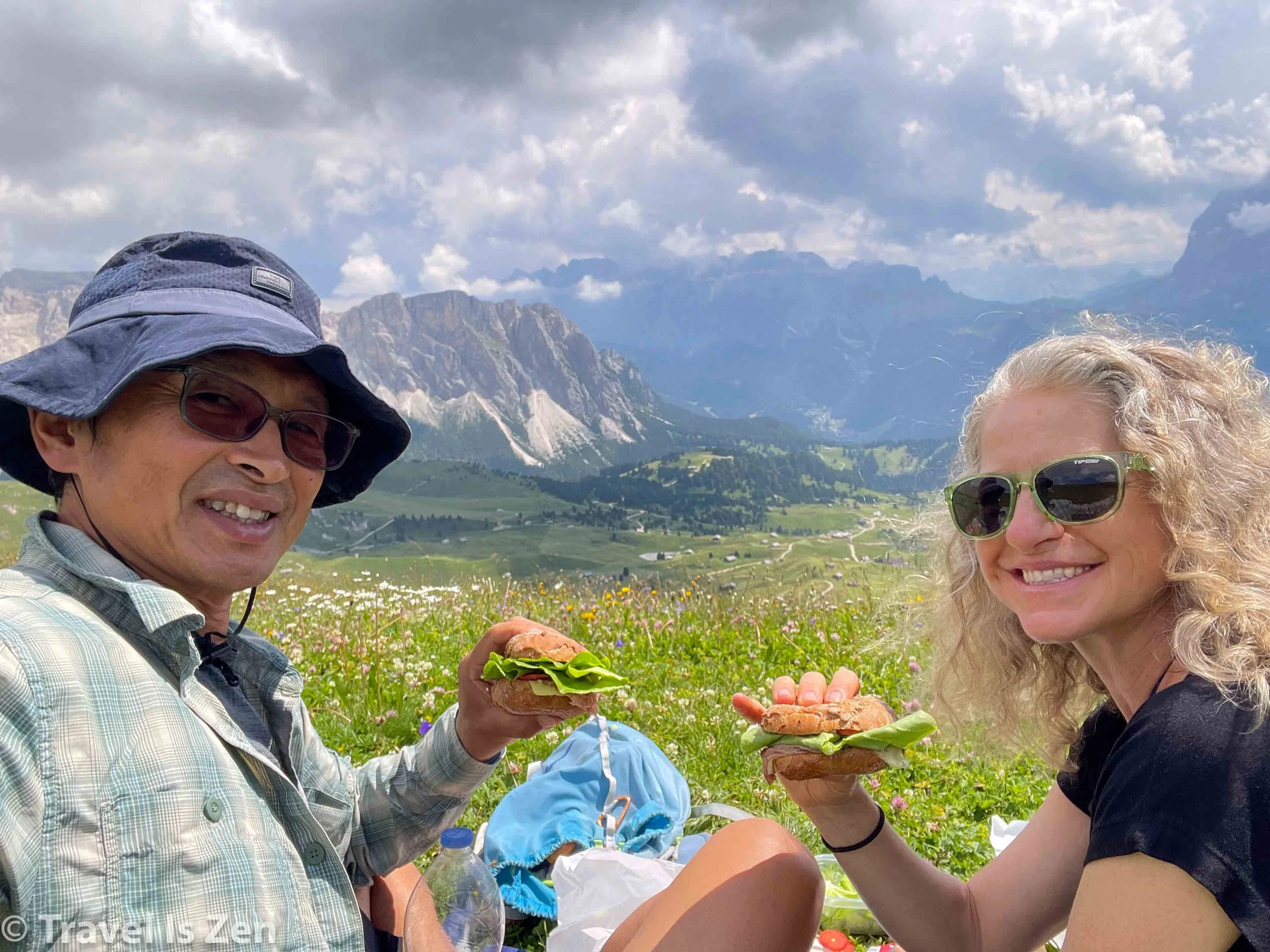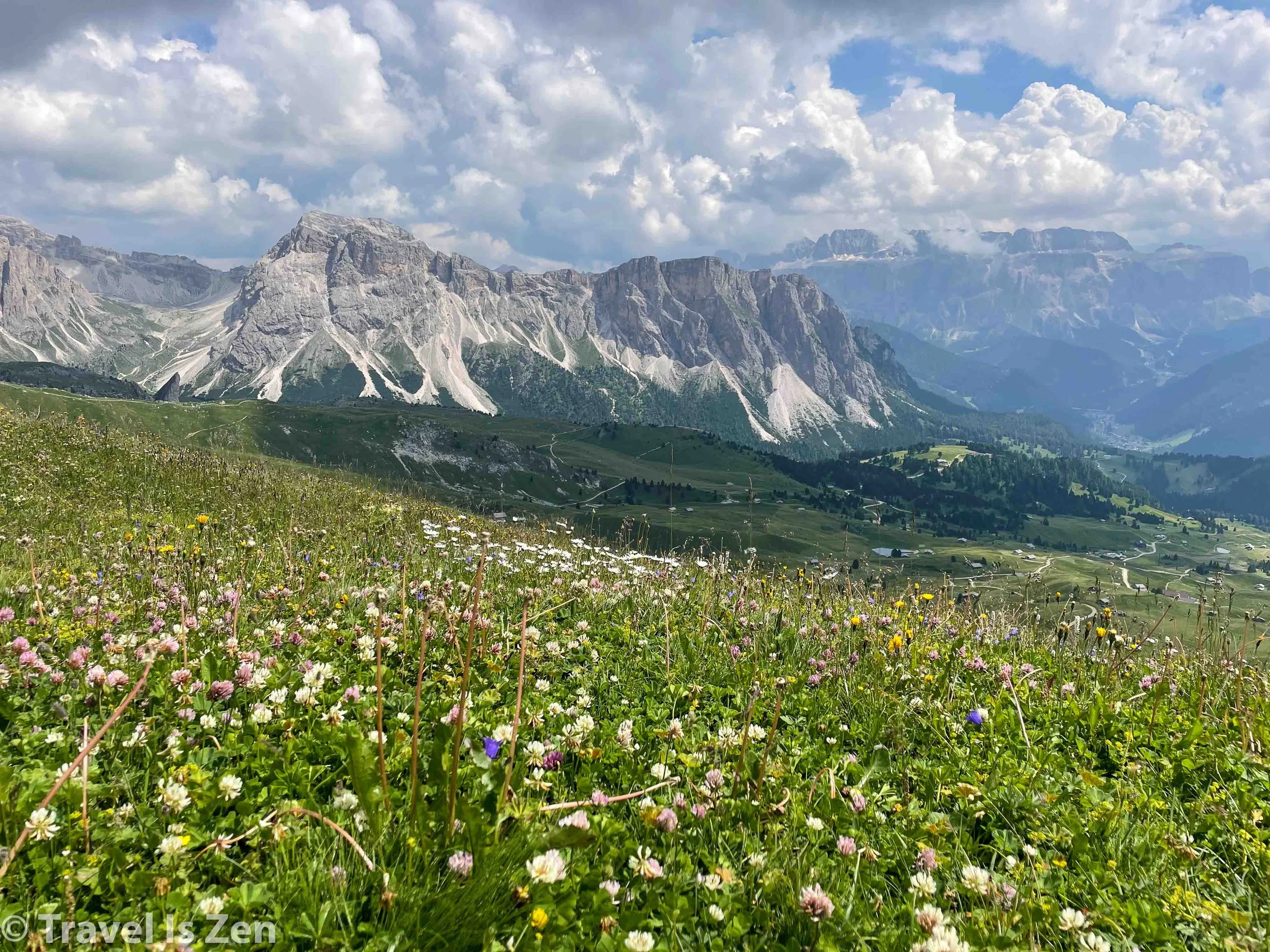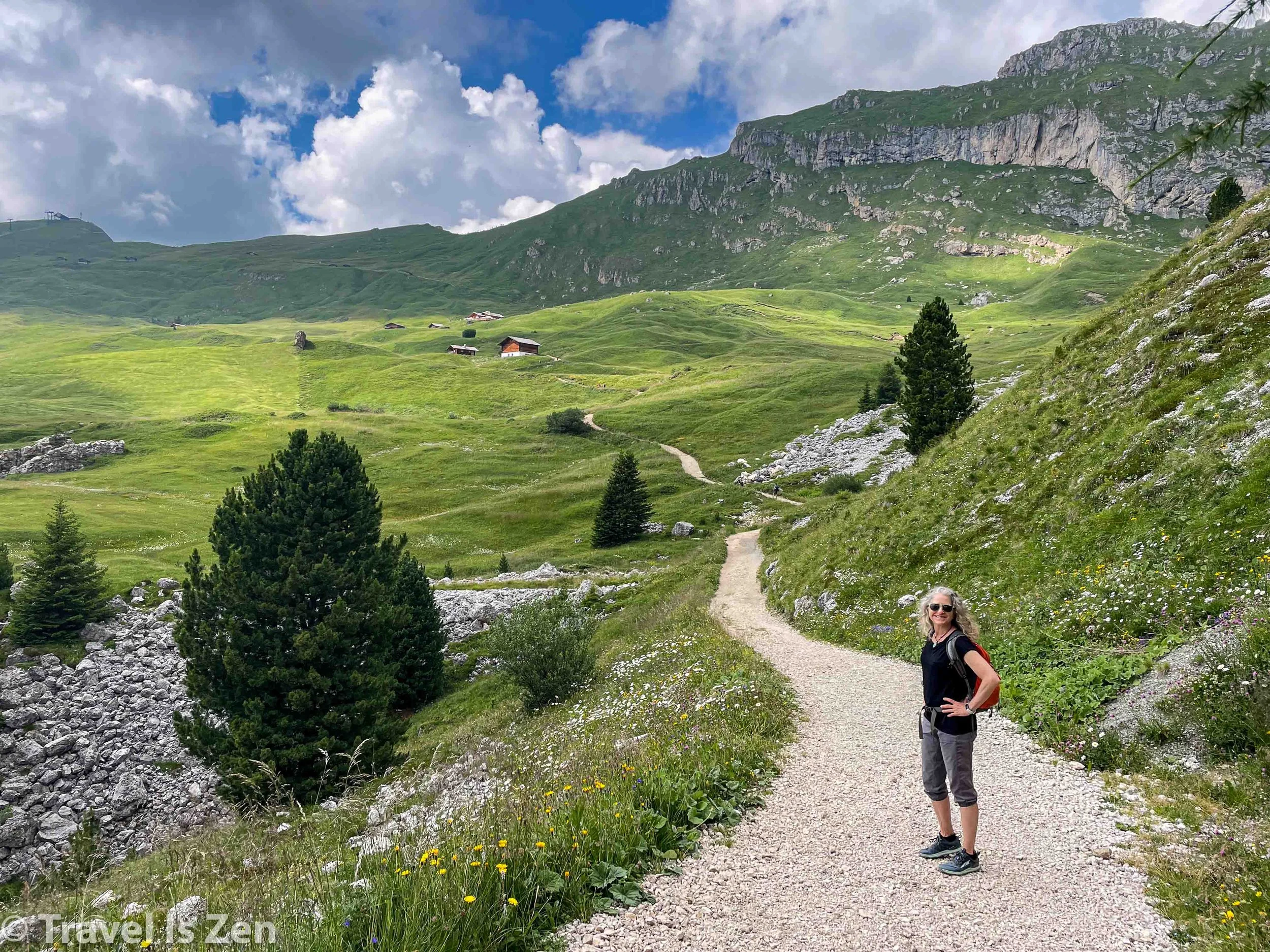Via Ferrata Sass Rigais + Seceda
Base Town: Ortisei in Val Gardena, South Tyrol; Trailhead: Seceda cable car station; Transportation to Trailhead: local valley bus and cable car
Seceda is a striking mountain range renowned for its dramatic ridgeline and panoramic views. Situated within the Puez-Odle Nature Park in the Italian Dolomites, it rises to an elevation of 2,519 meters (8,264 feet). From the cable car station, convenient walking trails lead to viewpoints of the Odle-Geisler peaks, Val Gardena, and the Alpe di Siusi. Seceda's unique topography features steep, jagged cliffs on one side and gentle alpine meadows on the other, creating a dramatic visual effect.
Sass Rigais is the highest of the Odle-Geisler peaks at 3,025 meters (almost 10,000 feet) in elevation. It’s the behemoth last peak you see in the photos above. Via ferrata Sass Rigais provides a supported climb to its imposing summit! This via ferrata is rated intermediate (B/C) and takes about 7 hours, depending where you start and end. Hopping off the cable car at the top of Seceda, we descended at a gentle angle across Seceda’s alpine meadow on Trail 4 towards Rifugio Firenze. At the hut, we jumped on Trail 13 to cross Plan Ciautier, a broad plateau that ascends to a trail fork.
Click any photo for a larger slideshow…
At the fork, it’s decision time. We wanted to do a loop, so we chose to ascend on the eastern side of Sass Rigais and return on the southwest trail that passes Forcella di Mesdi. We were in for a loooong switchback ascent across a massive scree flow before finally reaching cables at the foot of Sass Rigais.
Click any photo for a larger slideshow…
The climb through chimneys and gullies and then a final scramble across its broad rocky top to the cross was a ton of fun! From the Seceda cable car to the summit took about 3 hours.
After some time basking in the sun from our 10,000 foot perch, we climbed across the jagged ridgeline and then plunged downward on some near vertical ladders and cables. It looked scarier than it actually was because the via ferrata system in place up there is top notch - a cable, hand or foot hold just where you need it. At Forcella di Mesdi, we expected no more via ferratas; however, just after removing our harnesses, we had to navigate a final set of gullies with unstable loose rock. Again, the supports were there for a sense of security, but we didn’t need to clip on. The descent off Sass Rigais took us 90 minutes, which was longer than we expected. It’s just a long climb back down to less-vertical ground!
From the fork at the base of Sass Rigais, we returned to Rifugio Firenza. Rather than ascend back up to Seceda, we chose a path that meandered along the lower portion of the alpine meadow, with panoramic balcony views of this UNESCO World Heritage area. We ended at the Col Raiser cable car, which rode down into St. Christina. From there, a local bus transported us back to Ortisei.
Click any photo for a larger slideshow…
In the Val Gardena region of the Dolomites, there are a myriad of via ferrata of all levels. Via ferrata Sass Rigais and Oskar Schuster were intermediate level, with long approaches and more-technical climbing; via ferrata Col Rodella and Pitla Gran Cir were easy, short and sweet. All are fun and jaw-dropping scenic — I am literally running out of superlative adjectives to describe the dreamscape that exists pretty much everywhere in the Dolomites. To see the region’s spectacular views from a bird’s perspective, thousands of feet up, is a tremendous privilege. Thank you to the pioneers and today’s trail maintenance crews that keep these via ferrata in safe working order! 🤩





























